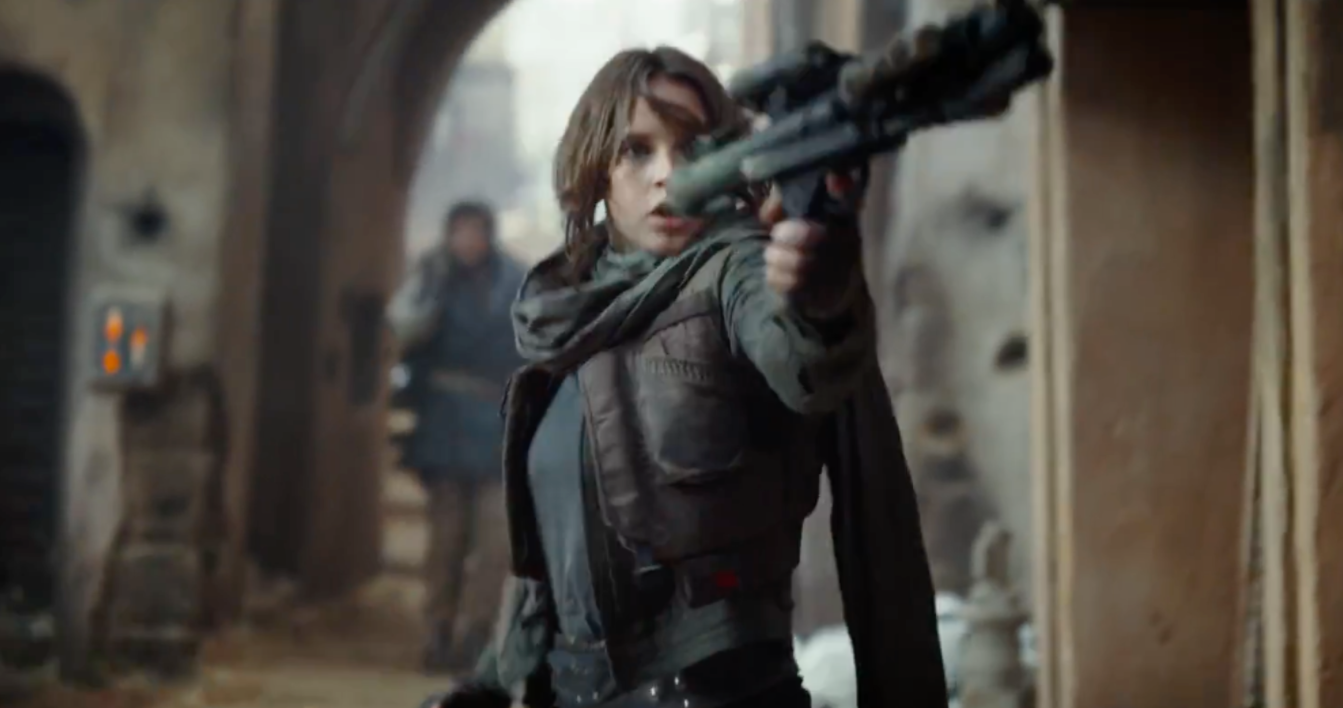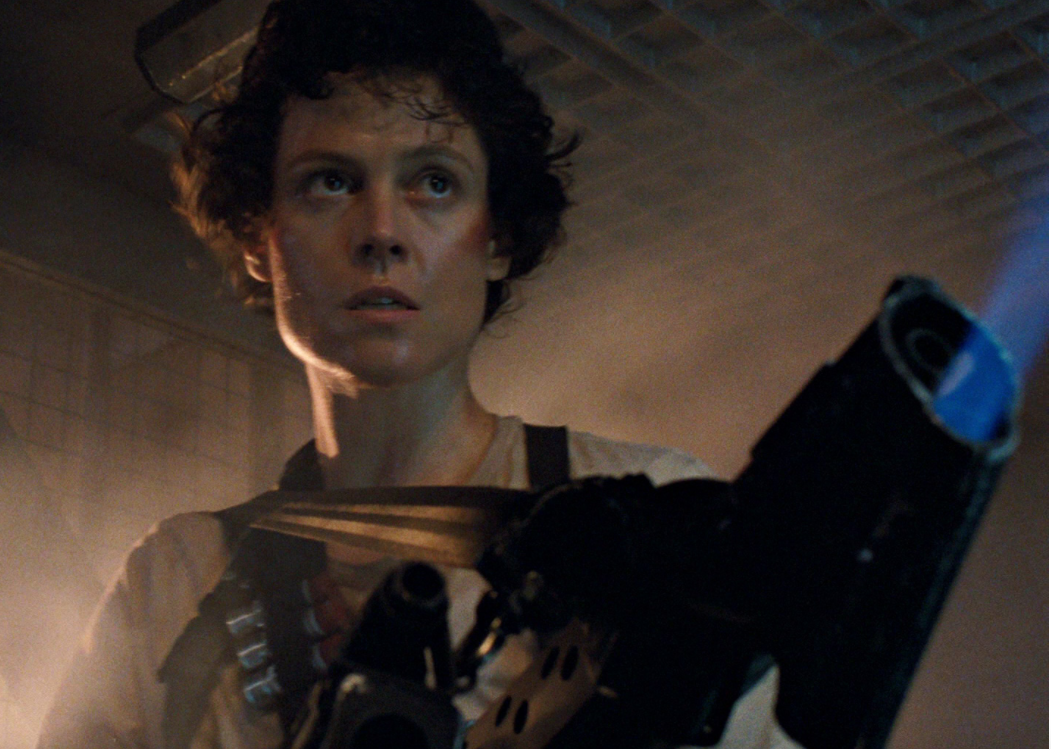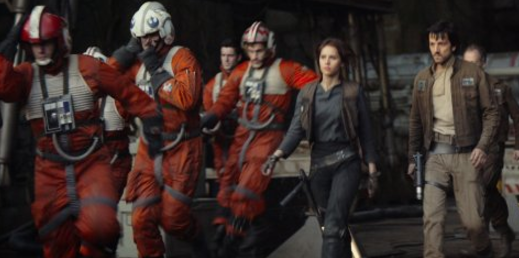
aNewDomain — I no longer go to movies with the expectation I’ll enjoy them. I just take my family and watch them watch the movie. That’s what I did with Star Wars: The Force Awakens. My wife and son really liked it, and I watched them like it.
But I had to watch the new Rogue One: A Star Wars Story for myself.
The effects were pretty great. I thought the Princess Leia bit at the end was magnificent, even though Tarkin did look a little off.
And as a story, Rogue One held up pretty well. The editorial decisions were brave. Rogue One director Gareth Edwards let the heroes die — all of them.
My problem with the movie, and it was a big one, had nothing to do with any of that.
 Here’s my review of Rogue One: A Star Wars Story.
Here’s my review of Rogue One: A Star Wars Story.
Meet Jyn Erso
There’s a strong female lead in Rogue One. That’s Jyn Erso (Felicity Jones), and in this film she goes on the heroes’ journey, moving from rejection of responsibility at the start of the film to embracing it at the end. She is willing to die for something and she has a director willing to let her die for it. That’s good stuff.
But don’t be fooled.
Rogue One is no step forward for feminism, which is what some reviews are claiming. They are dead wrong. For feminism in general and Star Wars in particular, Rogue One is a big step back for women.
Where is Ellen Ripley when you need her?
Consider how much of a better job Ridley Scott did with Alien.
 In that original 1979 flick, Sigourney Weaver’s lead role was, actually, somewhat of an accident.
In that original 1979 flick, Sigourney Weaver’s lead role was, actually, somewhat of an accident.
She read for the part of Ripley in the audition, which was a part written for a man. Now, there were no meaty roles for women back in the late 1970s. Weaver had no choice.
Like Peter Dinklage reading for The Station Agent, Weaver just ignored the type listings and went for it. She got the part. And so Ellen Ripley was born, a character that not only survived the movie but easily out-tough-guyed all the film’s tough guys. In Alien, Ripley bested the alien. And she did it in her underwear.
When Aliens came along as the sequel to Alien, James Cameron kept pushing that envelope.
By 1986, audiences were willing to accept women as soldiers. In Aliens, Jenette Goldstein plays Vasquez, a tough-talking, gun-toting workout fanatic and a futuristic space marine.
In that sequel, Vasquez got great action scenes and lots of great lines: “Have you ever been mistaken for a man?” “No, have you?”
Vasquez also gets the most violent of violent onscreen deaths in that film. It was a movie where nearly half the marines were played by women, where nearly everyone dies in a gory way, gender aside.
 No wonder Aliens was such a hugely successful sequel.
No wonder Aliens was such a hugely successful sequel.
A hard fail for feminism
In Rogue One, though, almost every soldier and pilot is a male. When Rogue One lifts off on its suicide mission, Jyn Urso is the only woman on-board. Fighter pilots die. In Star Wars: A New Hope, we saw the fireballs engulf the pilots and they screamed out their last breaths.
No women got this fate. The women in Rogue One die, but they die discreetly.
Also, like so many Disney productions, the number of other women in the cast is negligible.
Women play a few bit roles as fighter pilots, but they are vastly outnumbered by the guys. They are even outnumbered by the aliens.
There’s Genevieve O’Reilly as Mon Mothma expanding a bit part from “A New Hope.” But really that’s just about it.
On IMDB, I count 92 unambiguously male cast names and just 12 female roles, and two of them play the same character at different ages. That’s an on-screen ration of 7.7 to 1, and that’s just
the cast.
Is it still tokenism if a female gets the lead role?
But it isn’t just the dearth of female characters in Rogue One that drives a stake through the feminist heart, but it sure helps finish it off.
What happened, Disney?
In Rogue One, Jyn doesn’t get run through with a light saber like Obi Wan or Qui-Gon Jinn or Han Solo. She isn’t shot with a blaster like Princess Leia (may Carrie Ficher rest in peace) or Chewbacca, or blown up like C3PO.
She slips away into the like of a thermal event, gently, while holding hands with a man.
What happened between 1986 and 2016?
What happened is that we are notably less feminist.
Overall diversity was high in Rogue One. We do need diversity in film. Why would everyone be white or talk with an American or a British accent? Why would everybody be equally abled or similarly young or sexy or whatever? Great. And if you ignore the gender of the characters, this is a great movie.
If you spend five minutes thinking about the casting of women in this flick, or the lack thereof, or how they die, the tokenism will drive you nuts.
Think about it. Why did the blind samurai have to be a man anyway? Donnie Yen did a great job. I loved him in this movie. But was Zhang Ziyi busy? Or Maggie Q? Or a million other actresses with the talent and presence to pull off the role? And why does a droid need a male voice? Alan Tudyk did a great job voicing K2S0.
But is he the only one who could have done it?
What about Uma Thurman or Dame Judi Dench or any of a million women with, you know, voices?
With 7.67 male characters for every female one in Rogue One, why would it be necessary they be male?
Back in 1986, we were willing to accept female space marines. We were willing to watch them be murdered by xenomorphs, more than willing to watch them die in their own hand-grenade detonations to save their friends and go down swinging.
Thirty years ago, we were better at feminism than this.
Come on, Disney. Don’t turn Star Wars into yet another lame Disney Princess franchise. Don’t sell out the Star Wars universe and all the players in it just in the name of selling more toys for more boys.
There’s meat on the bone here, enough to go around.
For aNewDomain, I’m Jason Dias.
Movie Review: Ex Machina: Your Hot, Fake Naked Woman Will See You Now
Image credits: Felicity Jones: via IMDB.com, All Rights Reserved; Sigourney Weaver in Alien, via: Collider.com, All Rights Reserved; Jenette Goldstein as Vasquez in Aliens, via: 3bp.blogspots.com, All Rights Reserved; Jyn Erso action figure mockup, via HollywoodReporter.com, All Rights Reserved.













